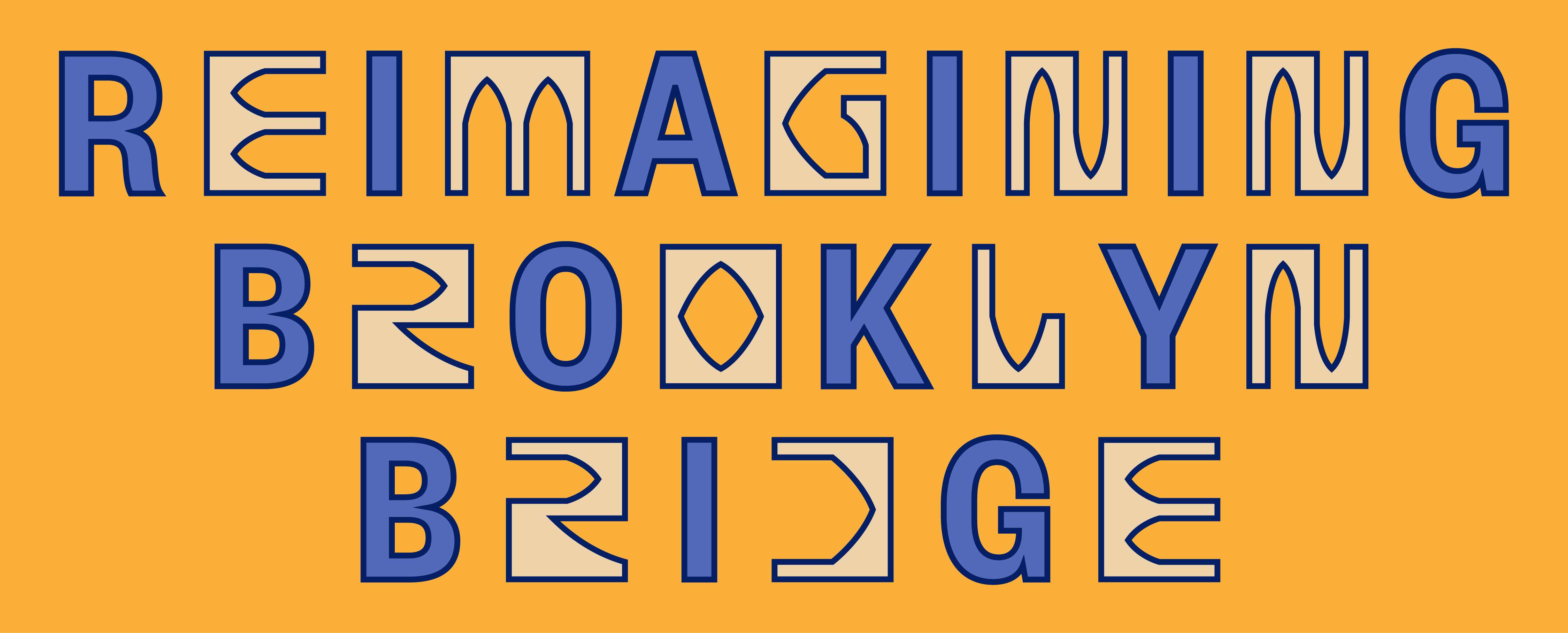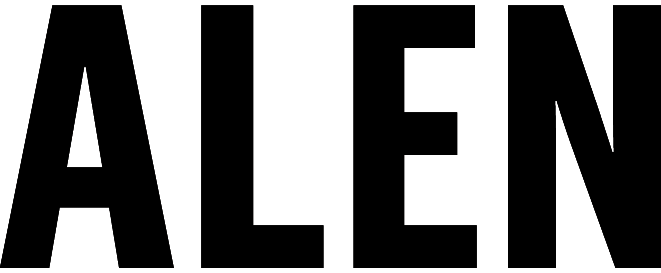Reimagining Brooklyn Bridge Winners
August 17, 2020

Designs propose reclaiming car lanes for pedestrians and cyclists, while centering sustainability and social equity
(August 17, 2020—New York, NY)—Van Alen Institute and the New York City Council today announced the winning proposals for Reimagining Brooklyn Bridge, an international design competition that aims to spark a new public conversation about New York City’s infrastructure. As made even more clear by the COVID-19 pandemic, public spaces and transportation options must be designed with equity, health, and sustainability at their core. With this in mind, the competition’s winning designs reclaim the bridge’s roadways for expanded pedestrian and cyclist use. By centering climate action, social equity, and creative expression, they also put forth strategies that could improve wellbeing in public spaces across New York City.
The winning design in the Professional category is Brooklyn Bridge Forest by a multidisciplinary collective of architects, conservationists, designers, and engineers led by Scott Francisco of Pilot Projects Design Collective. Brooklyn Bridge Forest triples the capacity for active transit, brings biodiverse forest and green spaces into the city, and establishes a partnership to conserve 200,000 acres of tropical forest.
The winning design in the Young Adult category is Do Look Down by Shannon Hui, Kwans Kim, and Yujin Kim; Hong Kong, Bay Area, CA, and New York. Do Look Down installs a glass surface above the bridge’s girders, creating a whimsical new pedestrian space brought to life by visuals that honor the city’s cultures, histories, and identities.
Each winner was chosen by a combination of public vote and scores from the competition’s interdisciplinary jury. Other finalists in the Professional category were Back to the Future by BIG + ARUP, New York; and Bridge X by ScenesLab + Minzi Long + Andrew Nash, New York, Boston, and Vienna. Other finalists in the Young Adult category were The Artery by Lukas Kugler, New Milford, CT; and The Cultural Current by Aubrey Bader and Maggie Redding, Knoxville, TN. To learn more about the competition and see all proposals, visit vanalen.org.
“With more than 200 submissions from 37 countries, we were incredibly heartened by the extraordinary outpouring of love for this New York icon. The Brooklyn Bridge is much more than transportation infrastructure; it’s a symbol of New York City itself,” said Deborah Marton, Executive Director, Van Alen Institute. “The competition’s top proposals demonstrate the Brooklyn Bridge’s potential to be a new kind of icon. The winning and finalist designs all contained excellent elements for us to consider as a city — such as Brooklyn Bridge Forest centering climate equity and biodiversity, Back to the Future considering the East River crossings as a unified system, or Bridge X introducing new modes of community engagement.”
“Congratulations to the well-deserved winners of the Reimagining Brooklyn Bridge competition. I’m encouraged by all the bold ideas we received on how to re-envision this world-famous walkway, which has become difficult for pedestrians, cyclists, and tourists to navigate over the years,” said New York City Council Speaker Corey Johnson. “The winning ideas inspire us to think differently about the city’s infrastructure. They are a crucial first step to get New Yorkers thinking about how to adapt not only the bridge but also our streets and public spaces for future generations and stay true to our goal of creating an environmentally sensitive, bike friendly city that prioritizes pedestrians over cars. While we review these bold long-term visions for the Brooklyn Bridge, the DOT should act with urgency to implement changes on the Brooklyn Bridge and on other East River crossings to give more space to cyclists and pedestrians as soon as possible.”
“Congratulations to the winning submissions in the Professional and Young Adult categories as the City Council and Van Alen Institute look to reimagine the Brooklyn Bridge,” said NYC DOT Commissioner Polly Trottenberg. “We are working to identify more space for pedestrians and cyclists and we always welcome new and innovative ideas to make this a reality, and thank the Council for their ongoing partnership.”
ABOUT BROOKLYN BRIDGE FOREST
Pilot Projects Design Collective, Cities4Forests, Wildlife Conservation Society, Grimshaw and Silman; New York and Montreal
Brooklyn Bridge Forest reimagines the bridge as an icon of climate action and social equity, improving mobility while respecting the landmark structure. The historic wooden walkway is expanded using planks sustainably sourced from a “partner forest,” a community in Guatemala protecting 200,000-acre rainforest. A new dedicated bike path and reclaimed traffic lanes more than triple the space for active and low-carbon transit. Biodiverse “microforests” at either end of the bridge bring nature to New York City, and serve as green spaces for underserved communities.
“We are energized by this victory for healthier cities and the global environment. Brooklyn Bridge Forest seeks to build a new vision of environmental sustainability and social equity — reimagining this beloved landmark as a way to connect New York City and its residents to forests and natural systems that sustain life for all,” said Scott Francisco, Brooklyn Bridge Forest team lead and founder of Pilot Projects Design Collective. “We thank Van Alen Institute and the New York City Council for their enormous commitment to this process, and our tens of thousands of supporters in New York City and around the world. We look forward to working with a broad array of stakeholders to advance this vision. Our team is ready and excited to help New York City co-create an optimistic, equitable, and restorative future.”
ABOUT DO LOOK DOWN
Shannon Hui, Kwans Kim, and Yujin Kim; Hong Kong, Bay Area, CA, and New York
Do Look Down’s installation of a glass surface above the bridge’s girders creates a whimsical new pedestrian space brought to life through art installations and seasonal programming. The lower roadway is converted into additional pedestrian and cyclist space that also offers opportunities for local vendors and performers. Powered by a kinetic paving system that draws energy from footsteps, LED displays and projection systems set up on and around the bridge visually honor the city’s cultures, histories, and identities in a non-invasive and sustainable manner.
“It’s been an incredible experience taking part in the Reimagining Brooklyn Bridge competition, a challenge originally addressing overcrowding that quickly became about so much more,” said Shannon Hui of the Do Look Down team. “This health crisis, in addition to its intersections with racial and queer injustice, has violently amplified the systemic inequities built into New York’s existing urban infrastructure, and for designers and developers to continue to operate within a vacuum would be to take advantage of a position of immense privilege. We are extremely grateful for the support and resources provided by the Van Alen Institute and the New York City Council to approach this project as an opportunity for us to imagine meaningful public spaces where people can feel seen and heard — and ultimately, belong.”
“Chinatown looks forward to seeing the finalist teams of the Reimagining Brooklyn Bridge competition continue to work with our community stakeholders,” said Wellington Z. Chen, Executive Director, Chinatown BID/Partnership. “Together we can better connect New York’s historic Chinatown and Little Italy districts with this world-renowned landmark bridge, and enhance the experience of thousands of visitors.”
“The sheer number of submissions and amount of talent and energy put into this competition prove that New Yorkers are ready to reimagine the Brooklyn Bridge,” said Council Member Margaret S. Chin. “This is only the first step to designing a bridge that’s safer and more inclusive to all who use it every day. I look forward to seeing these ideas implemented.”
“With six lanes for traffic and one narrow, cramped right-of-way that pedestrians and cyclists must share, it’s clear that we haven’t been making the best use of the Brooklyn Bridge,” said Danny Harris, executive director of Transportation Alternatives. “This design competition has expanded the conversation about how to unlock this critical link, and as advocates fighting for a bike- and pedestrian-focused future, we are glad to see renewed interest in orienting our bridges around the needs of people.”
“We were so impressed by these proposals for Reimagining Brooklyn Bridge, and are excited for the opportunities presented by the winning projects,” said Regina Myer, President, Downtown Brooklyn Partnership. “Brooklyn Bridge Forest’s scheme expresses a grand, green vision to increase pedestrian and bicycle space with a full scale addition of trees and other landscaping. Do Look Down’s vision for glass walkways and dynamic projections captured our imagination by thinking boldly about one of NYC’s most beloved landmarks. Thanks to Van Alen Institute and the New York City Council for striving to create a more equitable Brooklyn Bridge and improve upon this artery for countless New Yorkers at a time when the city is facing an outsized need for public space.”
About Van Alen Institute
Van Alen Institute helps create equitable cities through inclusive design. In an equitable city, every person is civically engaged, regardless of income or personal circumstances. To achieve that goal, inclusive design supports a community-driven public realm.
For more than 125 years, our purposeful community engagement, convening capacity, and global interdisciplinary network have produced profound transformations in the public realm of New York City and beyond. With a core belief in an interdisciplinary approach to design, the Van Alen team has backgrounds in architecture, urban planning, public health, civic advocacy, community engagement, and arts and culture.
See all work at vanalen.org.
Contact
For select images from the winning proposals, click here.
For more information and interview requests, email press@vanalen.org.

